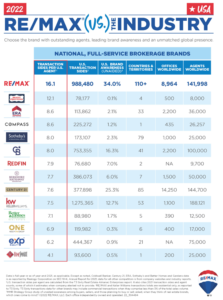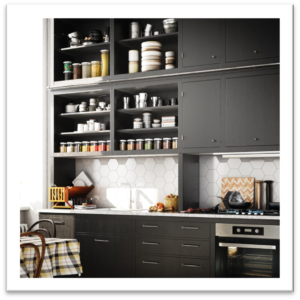April Newsletter and Market Update
What’s going on with this weather? Cold temps, blustery winds, snow, sleet, and sometimes sunshine and warm temperatures all on the same day. I switched over to A/C weeks ago and woke up this morning wondering why I could see my breath!
These conditions remind me of the real estate market in Northern Virginia this last month. One house had 100 visitors and multiple contracts in two days; another had 15 visitors and one contract in four days – in the same neighborhood one week apart. We also have a house that has been on the market for more than two weeks with just a handful of showings and no ratified contract. As I always advise, you must have the house in pristine condition, priced right, and in a great location to get the most activity as well as contracts. If you think you can sell anything in this market, you are far from reality.
The real question of the month is, “when should I put my house on the market?” The answer has to be don’t wait for the sake of waiting. The rising interest rates have finally impacted the market. We’ve had the most volatile few weeks of increases, with rates topping out at over 5%. This has some buyers looking to buy sooner rather than later (as many believe rates will continue to rise), juicing urgency yet also forcing some buyers to the sidelines because they can no longer make the numbers work for what they want.
Another aspect to consider when I’m asked this question is to dive into the number of houses for sale – especially in your neighborhood. Overall, in Northern Virginia, inventory levels are down 29% from this same time last year – but inventory is rising these last weeks, which goes to show you how low they were earlier in the year. This adds context to the pricing discussion. Prices are up over 9% from last year, but with rising interest rates, inflation, and more homes for sale, price increases will not be as substantial as earlier this year. So to re-iterate: Get your house on the market sooner rather than later. Call me today if you are considering selling and want to see how all these rapidly evolving factors impact you.
So how should buyers respond to all this? If you are financially stable and ready to buy a home, don’t wait – just go for it. An investment in an appreciating asset like real estate with fixed financing costs is one of your best hedges against inflation. Remember to buy for the right reasons – lifestyle, distance to work, and schools to name a few. Just don’t forget what your why is. Don’t expect mortgage rates or home prices to come down because neither is going to happen for the foreseeable future, at least in this region. Waiting will cost you more. As the saying goes, ‘don’t wait to buy real estate; buy real estate and wait.’ If you are thinking about buying, call me, and we can discuss your situation in more detail.
In the meantime, have a great spring. Hopefully, the weather will begin to normalize soon!
It’s a good life.
Chris
ANNUAL ‘RE/MAX VS. THE INDUSTRY’ REPORT REINFORCES BRAND ADVANTAGES FOR AGENTS, BUYERS, SELLERS
Read the full article at news.remax.com
 The results are in, and RE/MAX continues to be a real estate industry leader around the world.
The results are in, and RE/MAX continues to be a real estate industry leader around the world.
The 2022 RE/MAX vs. The Industry report shows that RE/MAX affiliates continue to lead the industry in productivity, with more closed transaction sides per U.S. agent than all other national, full-service brokerage brands. When compared to these national, full-service brokerage brands, RE/MAX also leads in U.S. brand awareness* and global footprint, with a presence in more than 110 countries and territories.
RE/MAX agents are dedicated to their profession – and have outstanding stats to prove it. “RE/MAX agents are passionate about helping others buy and sell real estate – and about making a positive impact in their communities,” says Nick Bailey, President and CEO of RE/MAX, LLC. “That’s why it comes as no surprise that RE/MAX, year after year, continues to outperform competitor brands in the most important ways.”
At RE/MAX Gateway, we have the tools, skills, knowledge and the drive to provide the best services to our clients. Give me a call to learn more!
Recipe of the Month
Roasted Cauliflower Pasta
www.goodhousekeeping.com
Prep time: 10 min | Total time: 30 min | Serves 4
Ingredients
12 oz. bucatini pasta
1 tbsp. finely grated lemon zest, plus 2 Tbsp lemon juice
1 small cauliflower (about 2 lbs; cut into small florets)
4 anchovies, finely chopped
1 tbsp. capers, finely chopped
1 tbsp. olive oil
3 cloves garlic, pressed
Pinch red pepper flakes
Chopped parsley, for serving
Directions
- Heat oven to 450°F. Cook pasta per package directions. Reserve 1/2 cup cooking water, drain pasta, transfer pasta back to pot and toss with lemon juice and 2 tablespoons pasta cooking water.
- Meanwhile, on a rimmed baking sheet, toss cauliflower with anchovies, capers and olive oil and roast 10 minutes. Add garlic, lemon zest and red pepper flakes to pan, toss and roast until cauliflower is golden brown and tender, 5 to 8 minutes more.
- If pasta seems dry, add a little more pasta cooking water and toss to coat. Serve cauliflower over pasta and sprinkle with chopped parsley.
5 THINGS ALL ORGANIZED KITCHEN CABINETS HAVE IN COMMON
RealSimple.com | Katie Holdefehr White
If you take a peek inside the most organized kitchen cabinets, you’ll likely find some commonalities. They maximize space; they make use of effective organizers; they are somehow free of expired spice jars and those sauce-stained plastic food containers that lost their lids ages ago. By working these features into your kitchen, your cabinets may just end up on the tidy side of things. Here are five organizing ideas all tidy kitchen cabinets have in common, plus how to integrate them into your own home.
They Go Clutter-Free
Unspoken rule #1 of organized kitchen cabinets: They never store things you don’t use or need. Start by removing everything from the cabinet (then vacuum up crumbs and wipe down the interior). Dispose of any food or spices that are well past their expiration dates. Ditch the chipped mugs and those souvenir cups your kids never drink out of.
They Max Out Vertical Space
Take a look in your kitchen cabinets. How much empty space is there between the top of the tallest item on each shelf and the bottom of the next shelf up? The goal is to reduce that unused vertical space. If you can, adjust the shelves to eliminate these gaps. Alternatively, you can invest in some kitchen cabinet organizers that make the most of tall cabinets. Tiered risers for your spice bottles are one option, while raised storage shelves that let you slide cups underneath and place dishes on top are another.
They Ditch the Bulky Packaging
I always thought that decanting pantry supplies was a frivolous pursuit reserved for Instagram-worthy kitchens and photo shoots, until I bought just a few glass canisters for my most-used pantry staples. Maybe it is more form than function, but I swear my kitchen cabinet feels much more organized without that bulky bag of flour. Plus, in the past, I could never remember if I had any sugar left and would end up buying another box, only to find the half-used one hiding on the back of a shelf when I got home—the clear canisters help with that, too. Now I can see what I have with a glance. Decanting takes less than 30 seconds, it helps cabinets look tidier, and it makes grocery shopping easier? I’m a decanting convert.
They Make Everything Easy to Reach
A tidy kitchen cabinet would never require anyone to dig in the back to find that missing bottle of cumin, or remove every pot and pan to find the skillet hidden at the bottom of the pile. The right kitchen cabinet organizers are the answer. In a lower cabinet, add a sturdy pot rack with a slot for each pot and pan. In an upper cabinet, let a turntable hold condiments you reach for all the time—so you can spin it to find the item you’re searching for. Consider which cooking tools or pantry supplies you often have trouble finding, and let that guide which organizers to introduce.
They Match Your Routine
To truly make your kitchen cabinets work for you, you may need to reconsider where you store things. Ideally, you want items stored as close to where you’ll need them as possible, so you can reduce the number of times you have to traverse back and forth across the room as you cook. For example, make sure the salt, pepper, and olive oil you use frequently are stashed in the cabinet next to the stovetop. The same goes for pot holders, so you can quickly grab a dish from the oven. Pantry ingredients that tend to appear together in recipes should be stashed near each other. It can feel disruptive to reevaluate where items live, but it will make your cooking routine go more smoothly.
LISTINGS UNDER CONTRACT AND JUST SOLD
4069 S Four Mile Run Rd, #404, Arlington, VA 22204
828 Maple Flats Ter, Purcellville, VA 20132







